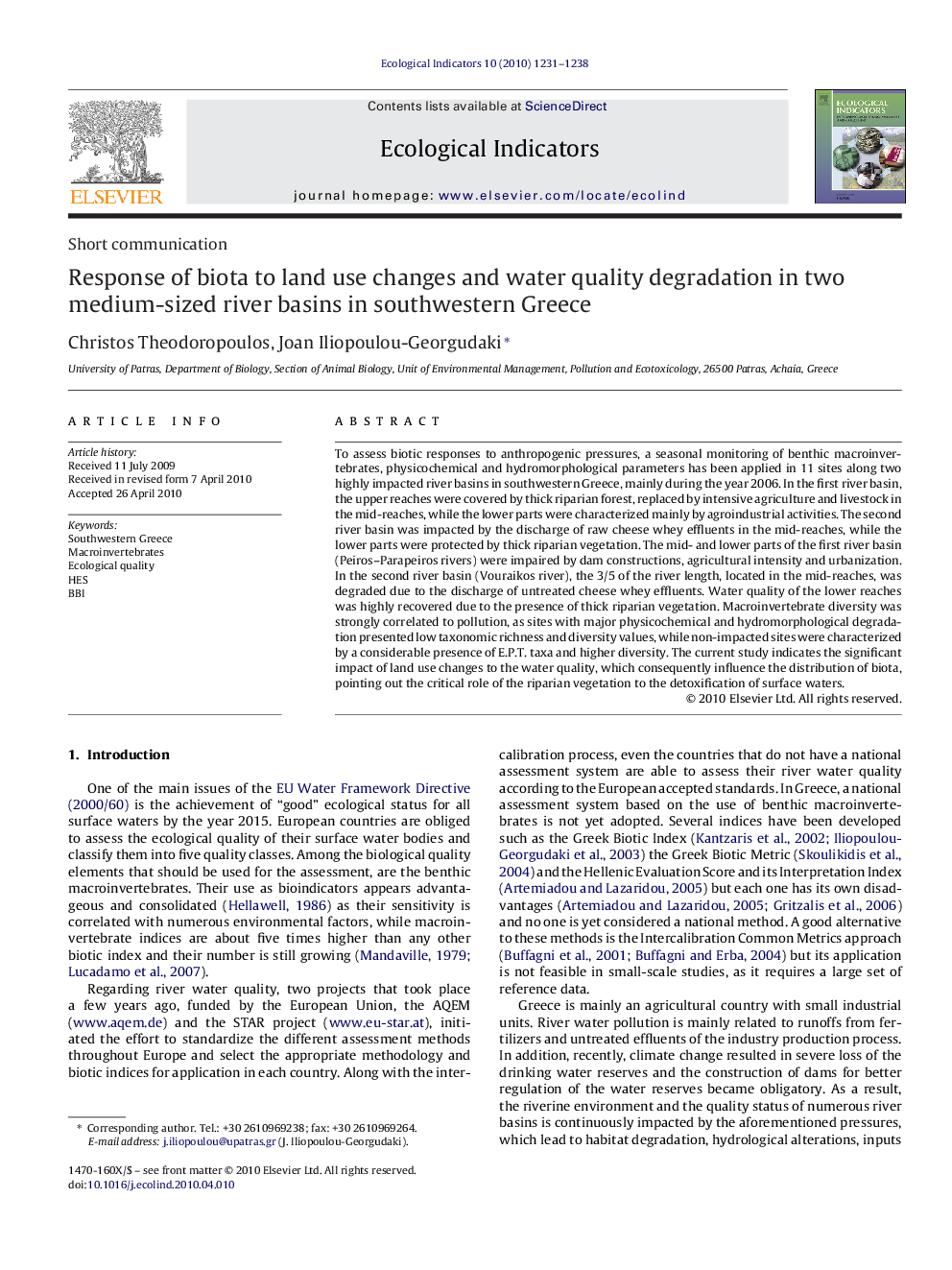| Article ID | Journal | Published Year | Pages | File Type |
|---|---|---|---|---|
| 4373870 | Ecological Indicators | 2010 | 8 Pages |
To assess biotic responses to anthropogenic pressures, a seasonal monitoring of benthic macroinvertebrates, physicochemical and hydromorphological parameters has been applied in 11 sites along two highly impacted river basins in southwestern Greece, mainly during the year 2006. In the first river basin, the upper reaches were covered by thick riparian forest, replaced by intensive agriculture and livestock in the mid-reaches, while the lower parts were characterized mainly by agroindustrial activities. The second river basin was impacted by the discharge of raw cheese whey effluents in the mid-reaches, while the lower parts were protected by thick riparian vegetation. The mid- and lower parts of the first river basin (Peiros–Parapeiros rivers) were impaired by dam constructions, agricultural intensity and urbanization. In the second river basin (Vouraikos river), the 3/5 of the river length, located in the mid-reaches, was degraded due to the discharge of untreated cheese whey effluents. Water quality of the lower reaches was highly recovered due to the presence of thick riparian vegetation. Macroinvertebrate diversity was strongly correlated to pollution, as sites with major physicochemical and hydromorphological degradation presented low taxonomic richness and diversity values, while non-impacted sites were characterized by a considerable presence of E.P.T. taxa and higher diversity. The current study indicates the significant impact of land use changes to the water quality, which consequently influence the distribution of biota, pointing out the critical role of the riparian vegetation to the detoxification of surface waters.
